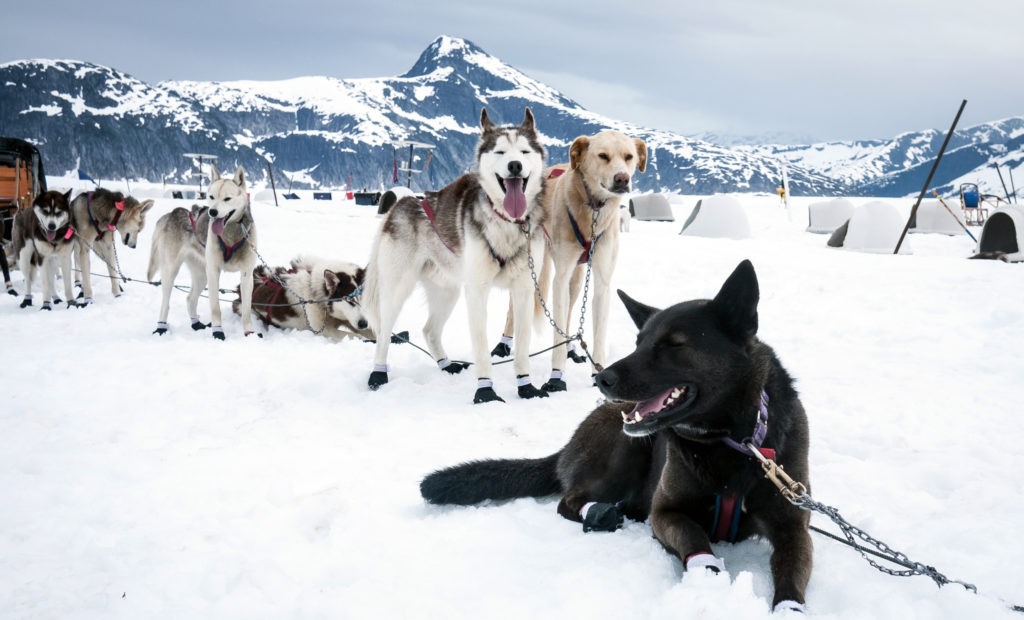Researchers adopted 103 retired sled dogs for a longitudinal study on canine aging that may one day be used to increase human healthspan and longevity.

The Trending With Impact series highlights Aging (Aging-US) publications that attract higher visibility among readers around the world online, in the news, and on social media—beyond normal readership levels. Look for future science news about the latest trending publications here, and at Aging-US.com.
—
Whether they are sprinters or distance runners, sled dogs are known for their competitive nature and athletic prowess. With age, however, these athletes eventually run out of steam—just as humans inevitably do. Canines of all breeds are affected by aging, including a loss of resilience, accumulation of molecular damage and age-related diseases. These relatively short-lived, large mammals are one of the few to share environments with humans, and even have access to advanced medical care. Many believe the canine aging process resembles human aging the closest compared to any other animal.
A team of scientists—from Cornell University, North Carolina State University, Tauber Bioinformatic Research Center, and Roswell Park Comprehensive Cancer Center—saw the opportunities and advantages of studying canine aging in a controlled environment. Co-founders Andrei Gudkov, PhD, Dr Sci, Katerina Andrianova, PhD, and Daria Fleyshman, PhD, established a non-profit organization called Vaika Inc. In 2018, Vaika allowed these researchers to begin collaborating in a longitudinal study on the mechanisms of aging among 103 retired sled dogs. The researchers authored a trending research perspective about the details of their long-term study. In September 2021, their paper was published on the cover of Aging (Aging-US)’s Volume 13, Issue 18, and entitled, “Development of infrastructure for a systemic multidisciplinary approach to study aging in retired sled dogs.”
THE STUDY
The researchers chose to adopt retired sled dogs for this study in particular for a variety of reasons: 1) Based on the type of events they partake in, sled dogs usually have a record of health and performance that can be used for reference as they age. 2) Sled dogs are selected for performance, but are not limited to a particular breed and can be crossbred. This provides a somewhat homogeneous population to study while being less prone to breed-specific biases. 3) Sled dogs are used to working with many handlers, therefore, the transition into the kennel/research facility may be easier for them to adjust to. 4) Over their career, these dogs have been exposed to environmental pathogens in frequent group interactions. This provides the researchers a sufficient immune system model to study. 5) Sled dogs are used to living in packs, but forming short-term bonds—making them adaptable to living with a variety of handlers in a population of 103 other dogs.
“Thus, it is essential to establish a reference set of ‘healthy aging’ parameters specifically for each dog model, and we see this as one of the main goals of our sled dog study.”
The optics of caring for 103 retired sled dogs between the ages of eight and 11 (when the study began) may initially sound problematic, but all indications suggest that these dogs are living better than many humans. Their 8,254-square foot kennel is located on the Baker Institute campus of the College of Veterinary Medicine at Cornell University. The researchers designed the study so that the dogs are thoroughly examined, observed, fed, socialized, exercised, vaccinated and anything else they may need. The dogs’ personalities and special needs are taken into consideration when cohabitating with other dogs, in their separate rooms and during playtime outside. They have in-house veterinarians and researchers to monitor their health. Importantly, the researchers are monitoring not only the dogs’ health but also parameters of their individual aging experience.
“Our goal is not just to assess the state of health of a given dog but rather to dissect the aging process into its two key components: (i) declining resilience and (ii) acquisition of aging-related diseases.”
In order to observe declining resilience and aging-related diseases, the dogs participate in regular physical fitness (treadmill and pull tests) and cognitive tests (handler questionnaires, β-amyloid plaques, brain atrophy, neuron loss, and etc.). Their performance and scores are measured and compared to their previous scores. The researchers also regularly collect blood samples to assess the dogs for somatic cell genome modifications (accumulation of DNA damage) and immune system status (immunosenescence).
“In general, the canine immune system undergoes similar age-related changes to that of humans [85]. However, since completed canine studies are generally less comprehensive and predominantly cross-sectional, the reliability and relative significance of various immune parameters in aging have yet to be characterized.”
CONCLUSION
This research is still ongoing, and the researchers believe the infrastructure they established in this sled dog study is an important advancement in aging research. In the future, this animal model may be used to test anti-aging therapies and translate into advancing human healthspan and lifespan.
“We expect that these analyses will allow us to (i) characterize the mechanism(s) and regulation of canine aging, (ii) identify parameters and biomarkers suitable for assessment of biological age, and (iii) define factors that may act as aging accelerators or decelerators.”
Click here to read the full research perspective, published by Aging (Aging-US).
WATCH: AGING VIDEOS ON LABTUBE
—
Aging (Aging-US) is an open-access journal that publishes research papers twice a month—in all fields of aging research and other biomedical topics. These papers are available to read at no cost to readers on Aging-us.com. Open-access journals offer information that has the potential to benefit our societies from the inside out and may be shared with friends, neighbors, colleagues, and other researchers, far and wide.
For media inquiries, please contact [email protected].